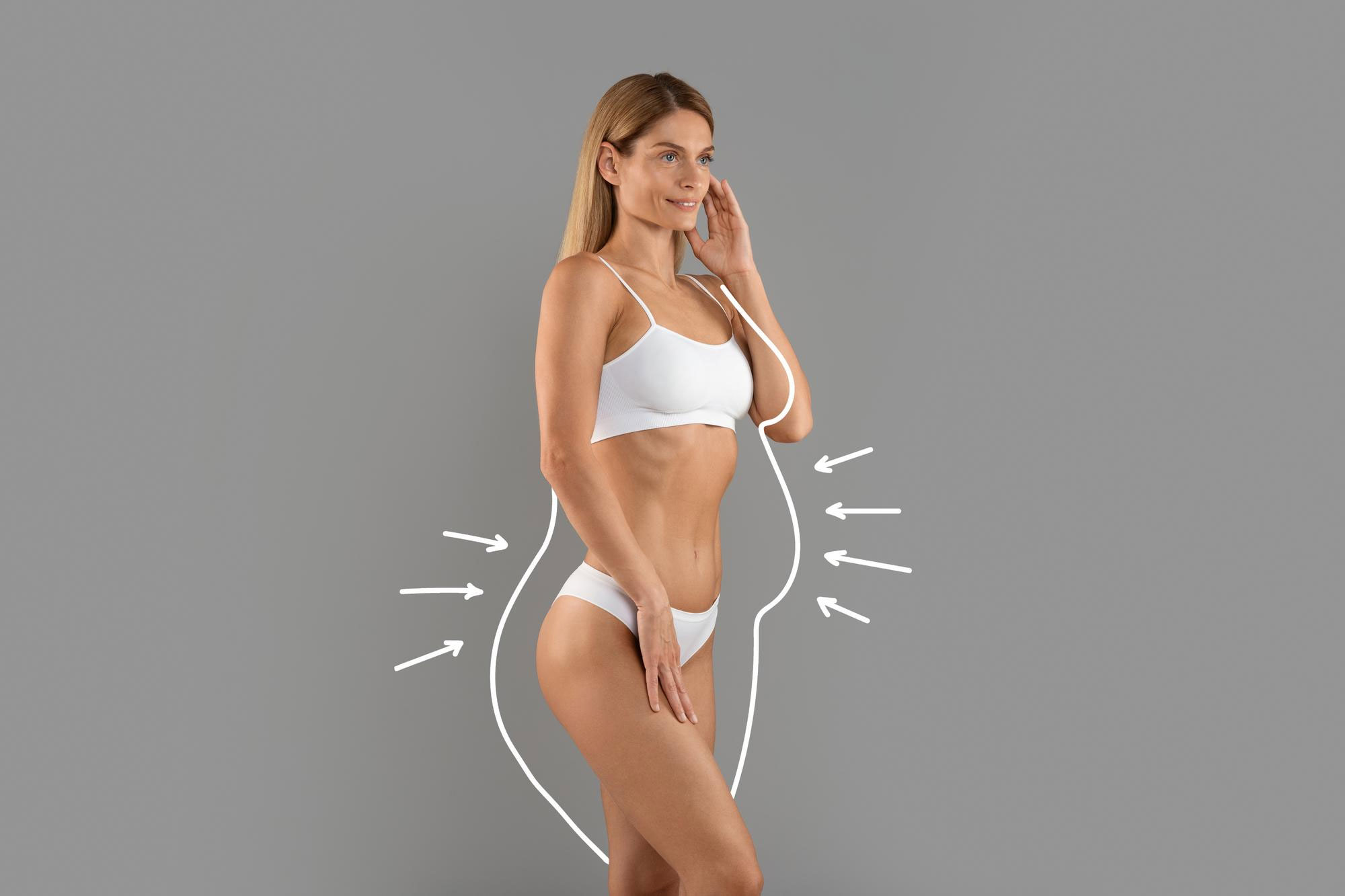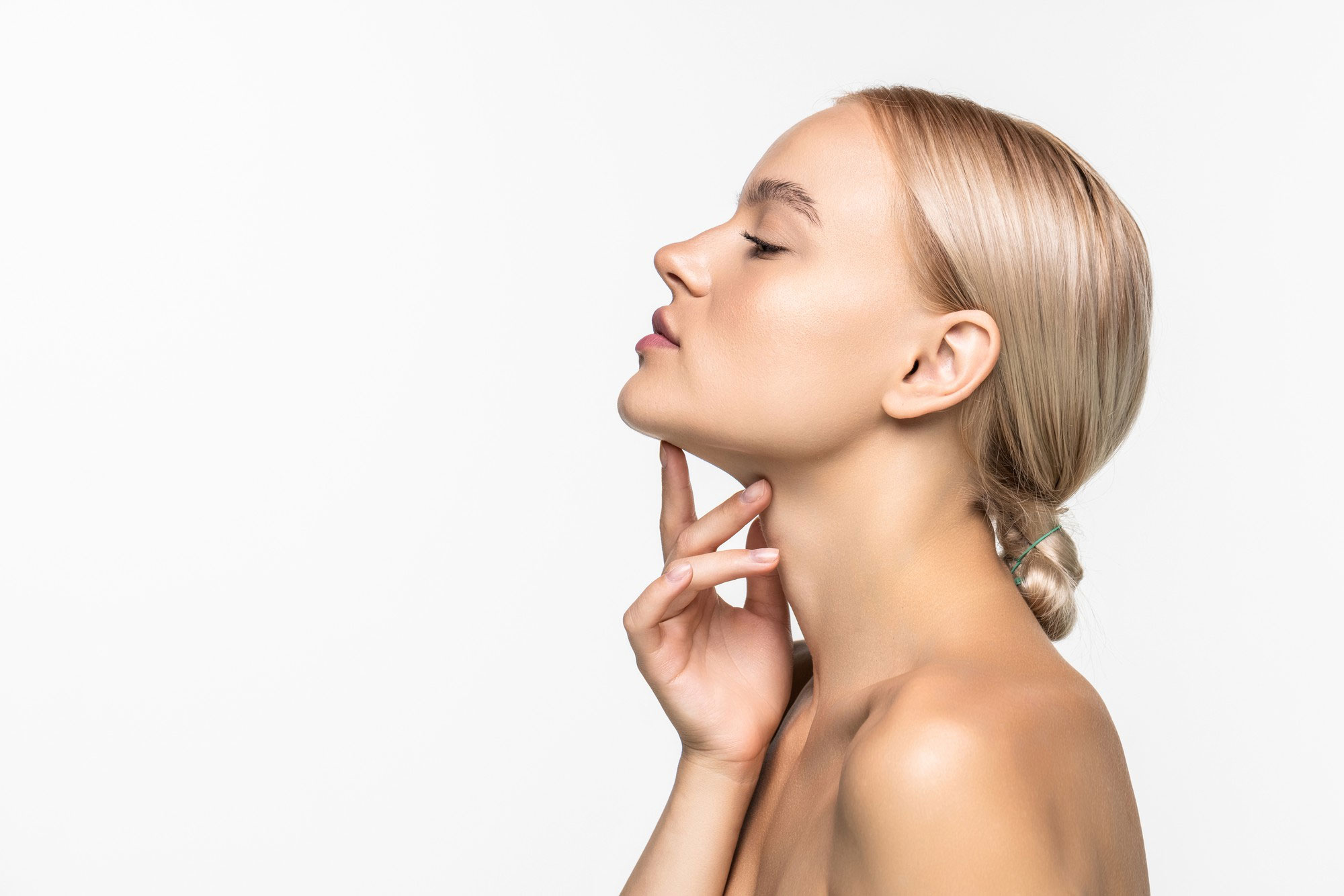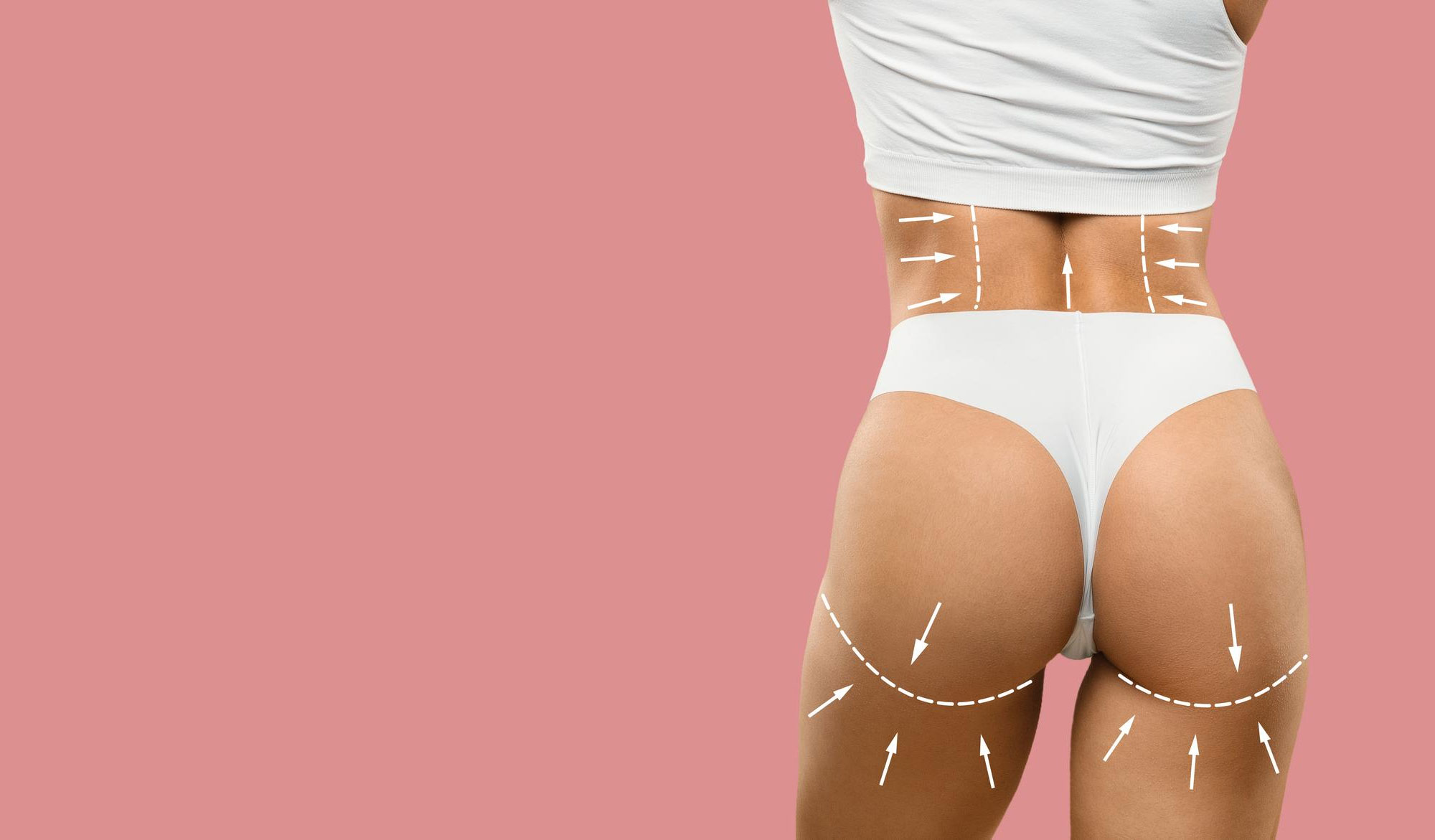What is Rhinoplasty?
Rhinoplasty is a surgical intervention that aims to correct the shape and/or function of the nose. The word comes from the Greek roots "rhinos" (nose) and "plastos" (shaping). Think of it this way: Just as a sculptor works with clay to shape a work of art, the surgeon meticulously sculpts the cartilage, bone structure and soft tissue of the nose. But of course, the goal is not only aesthetic appearance.The regulation of breathing and the correct positioning of the structures in the nose (such as the septum or turbinates) are also an important part of this surgery.
Since the nose is located in the center of the face, even a slight change can completely transform your expression. Therefore, rhinoplasty is a surgery that can affect the person not only physically but also psychologically. Feeling better when you look in the mirror or waking up with a relaxed breath can improve the quality of life more than you think.
Why is Rhinoplasty Preferred?
The reasons why rhinoplasty is preferred can be categorized under two main headings: aesthetic and functional.
Aesthetic Purposes:
A More Balanced Facial Appearance: Some people feel that their nose is not in harmony with their face. Rhinoplasty offers the opportunity to restore this harmony for people with prominent nasal arches, a drooping tip or a very wide nose.
Congenital or Subsequent Deformities: Some people think that their nose is structurally crooked, too big or too small. Congenital deformities or deformities caused by trauma can also be corrected with rhinoplasty.
Increased Self-Confidence: The increase in self-confidence after surgery is very important for individuals who feel uncomfortable because of their nose shape and develop obsessive thoughts about their nose in social environments.
Functional Objectives:
To Breathe More Comfortably: Conditions such as nasal congestion, deviated septum or concha enlargement can make breathing difficult. When these problems are corrected with rhinoplasty, patients feel a noticeable relief in their daily lives.
Repair of Traumatic Damage: The bone-cartilage structure that is broken or damaged as a result of an accident, fall or impact can be repaired with surgery if it causes functional problems.
Quality Sleep: Complaints such as snoring or sleep apnea due to nasal obstruction can be reduced or completely eliminated with intranasal surgical interventions.
Who is a Suitable Candidate for Rhinoplasty?
As with every surgery, there are certain criteria for rhinoplasty. First of all, the development of the nose must be completed. Generally, the age range of 16-18 is the period when the nose approaches its final form. There may be slight differences here depending on gender and personal development.
Physical Health: People with any chronic disease or uncontrolled medical condition may be at increased risk of surgery. Patients with heart disease, uncontrolled diabetes or bleeding disorders should be evaluated in detail.
Realistic Expectations: Rhinoplasty is not a magic show. Instead of expecting a perfect nose or the most perfect facial expression "according to social perceptions", one should aim for a natural-looking result that is compatible with one's own facial features.
Psychological Preparation: Before the surgery, it is very important for the person to make this decision for himself/herself and to avoid external pressures or momentary enthusiasm. Especially those who associate the result of surgery with the expectation of "solving all problems in life" may experience disappointment.
In addition, those who have had previous nose surgery and need revision surgery are also potential candidates for rhinoplasty. However, second or third time interventions are more challenging because scar tissue can complicate surgical planning and the procedure.
What Preparations Are Made Before Rhinoplasty?
Rhinoplasty is not a surgical procedure that can be performed with the thought "Let's have surgery tomorrow". It requires a multifaceted preparation.
Medical Evaluation: Structural problems in the nose, respiratory tract problems and your general health condition are evaluated with detailed examinations and tests. If necessary, imaging methods such as tomography or x-rays are used.
Personal Analysis and Expectations: In discussions with the doctor, what kind of nose shape you want to have, the scope of the surgery and your expectations of the result are discussed. Harmony with other parts of your face is the most important factor here.
Smoking and Alcohol Use: Smoking adversely affects blood circulation and delays postoperative recovery. It is therefore important to stop smoking at least a few weeks before surgery. Alcohol intake can also affect the blood clotting mechanism.
Medication Use: Blood thinners (e.g. aspirin) or herbal supplements (e.g. ginkgo biloba) should be stopped for a certain period of time before surgery. This should be done under the supervision of a doctor.
Moral and Psychological Preparation: Being mentally prepared for the surgery and the changes that may await you afterwards contributes positively to recovery.
Think of it like having your car serviced before a road trip. Having everything complete and thorough makes you more prepared for the surprises that await you on the road.
Which techniques are used in rhinoplasty?
Rhinoplasty is performed with different techniques depending on how the surgeon accesses the nasal structure during surgery and which methods he uses. The two most common approaches are "open" and "closed" methods. However, with the development of technology, it is possible to talk about more specific and innovative techniques.
Open Rhinoplasty:
In this method, a small incision is made in the area called the columella that separates the nostrils. Through the incision, the nasal skin is lifted and the surgeon can see the cartilage and bone structures directly. Open rhinoplasty is preferred especially in cases where major changes are planned at the tip of the nose, where the bone and cartilage need to be significantly reshaped or in complex cases after trauma. The incision scar on the columella usually fades over time and becomes unnoticeable.
Closed Rhinoplasty:
In the closed method, all incisions are made through the nostrils, so there are no incision scars visible from the outside. The surgeon has a more limited field of vision, but the healing process is expected to be relatively faster because less nasal tissues are removed. In relatively simple deformities where there is no excessive lifting of the tip or major bone filing, the closed method is often applied.
Ultrasonic Rhinoplasty (Piezo Surgery):
In this method, which has increased in popularity in recent years, special devices that use ultrasonic vibrations to shape the nasal bones come into play. It allows for a more controlled and precise procedure than traditional bone cutting instruments. Bruising and swelling may be less due to the potential for less damage to soft tissue.
Preservation Rhinoplasty:
In this technique, it is aimed to preserve the natural anatomy as much as possible by intervening less in the tissues of the dorsum of the nose. Instead of completely destroying and rebuilding the dorsum line, the existing structure is shaped with small touches. Thus, both the natural curves of the dorsum of the nose are preserved and a more natural appearance is obtained after surgery.
Nose Shaping with Fillers (Non-Surgical Rhinoplasty):
Although not exactly "rhinoplasty", filler injections can be used for small corrections in the shape of the nose. For example, hyaluronic acid filler can be injected into the root or tip of the nose to camouflage a small bone spur. The disadvantage of this method is that it is not permanent and does not solve structural problems of the nose (such as deviation).
What should I expect during the recovery process?
Recovery after rhinoplasty takes place step by step, rather than returning to normal life the very next day. Knowing what you may encounter during this process is important to keep your morale high and to apply the right care.
First Week
Swelling and Bruising: It may be especially noticeable around the eyes. It is a natural reaction of the tissues around the nose to the surgery. It usually starts to ease within a week.
Nasal Tampon or Splint: A tampon, plastic or plaster-like support can be applied inside or on top of the nose to maintain the shape of the nose and regular healing. Your doctor usually removes these materials at the end of the first week.
Pain and Discomfort: Pain is usually mild to moderate and can be controlled with prescribed painkillers. There may also be discomfort, which is more commonly described as a "feeling of fullness in the nose".
2-4 Weeks:
Return to Everyday Life: Most people can return to work or school after 2-3 weeks, except for heavy exercise or activities where there is a risk of impact.
Decrease in Swelling: The swelling at the tip of the nose gradually goes down, but it may take several months to go down completely.
Between 1-3 Months:
Improvement in Breath Quality: If functional problems within the nose have been corrected, it is possible to start breathing more comfortably.
Settling of the Shape: After the surgery, the nose approaches the desired shape to a great extent. However, especially in patients with thick skin, it may take longer for the tip of the nose to fit perfectly.
1 Year and After:
Final Appearance: It may take up to 12-18 months for the final shape of the nose to become fully apparent and for all tissue healing to be completed.
Fading of Scars: The color of the incision scar made in open rhinoplasty becomes lighter and increasingly indistinct.
During this period, it is important to take care of your nose, to be careful against impacts, not to rub your nose and to follow the doctor's recommendations exactly. Again, if we think in an analogy, although your nose caresses your eyes like a work of art after surgery, it is like a freshly painted painting; if you touch it immediately, there may be scars.
What are the risks I may face in rhinoplasty?
Rhinoplasty is one of the safest procedures today. Nevertheless, like any surgery, it carries some risks of its own.
Bleeding: After nose surgeries, bleeding may occur in the form of mild oozing or dripping. More serious bleeding is rare and is usually controlled by medical intervention.
Infection: Although very rare, infection may develop at the suture sites or inside the nose. It is important to use antibiotics and pay attention to hygiene rules.
Septum Perforation: Occurs when the nasal septum (the partition separating the two nostrils) is unintentionally perforated. It is a rare complication, but when it occurs, it may require additional surgery.
Problems in Healing: In some patients, wound healing may progress slower than normal. Smoking increases this risk.
Need for Revision Surgery: A second intervention may be required if the desired result cannot be fully achieved after surgery or due to a problem that occurs during the healing process. These revisions are usually planned 6-12 months after the first operation.
The risks may worry you, but a detailed preoperative evaluation, choosing an experienced surgeon and following your doctor's recommendations can greatly reduce these risks.
How does the quality of life change after rhinoplasty?
A rhinoplasty surgery performed under ideal conditions and successfully healed can cause positive changes in the patient's quality of life, both physically and psychologically.
Increased Self-Confidence: A person who has a feature on his/her face that he/she is uncomfortable with can feel more comfortable in social environments. Seeing yourself happier when you look in the mirror also increases your energy during the day.
Breathing Comfortably: The functional dimension of the surgery is especially the elimination of problems such as deviation or concha enlargement. It creates positive effects such as a more open airway, less shortness of breath when playing sports, less snoring when sleeping.
Overall Softening of Facial Expression: Sometimes a nasal arch or very wide nasal wings can make the facial expression appear harsher or disharmonious than it actually is. After rhinoplasty, harmony in facial features increases and a more balanced appearance can be achieved.
Psychological Relief: Especially for people who have been subjected to ridicule about their nose since adolescence or who try to hide their nose in every photo, the relief that comes after surgery can lead to a serious leap in quality of life.
The important thing here is not to expect the surgery to "make life perfect". Although adjusting the shape of the nose and breathing better are important in terms of happiness and self-confidence, it is not a miraculous change that will affect all elements of life. Nevertheless, many patients report feeling more whole and complete after surgery.






























